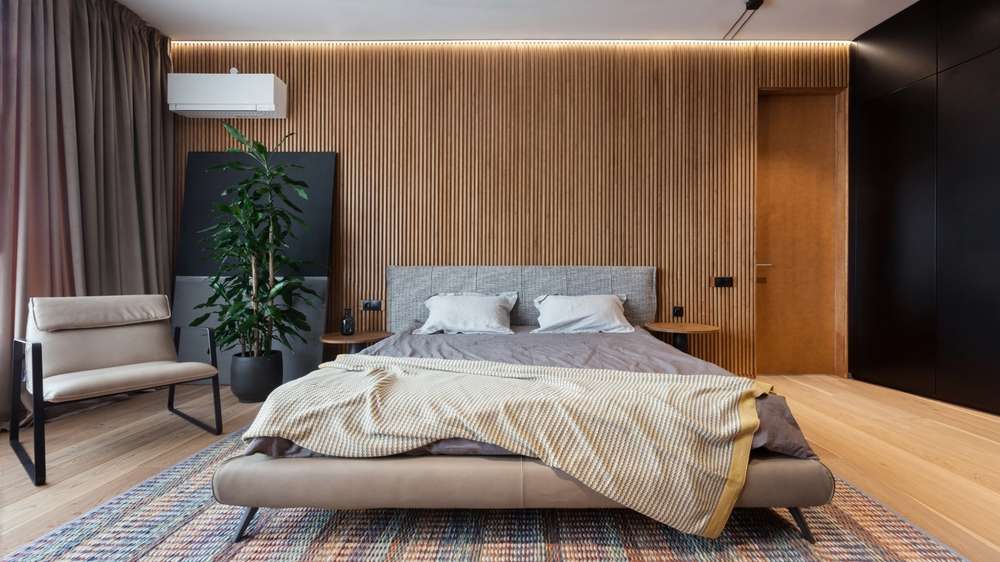Biomorphic Patterns: Nature-Inspired Elegance in Home Design
In the ever-evolving world of interior design, a captivating trend is emerging that seamlessly blends the organic beauty of nature with modern aesthetics. Biomorphic patterns, inspired by the fluid shapes and structures found in living organisms, are making waves in home decor. This innovative approach not only brings a touch of the outdoors inside but also creates spaces that are visually stunning and psychologically soothing. Let's delve into the fascinating realm of biomorphic design and explore how it's revolutionizing the way we think about our living spaces.

Today, biomorphic patterns have experienced a renaissance in interior design, driven by a growing desire to reconnect with nature and create more harmonious living environments. This resurgence is not just about aesthetics; it’s a response to the increasing urbanization and technological saturation of our lives, offering a visual respite and a subtle reminder of our connection to the natural world.
The Psychology of Organic Forms
The appeal of biomorphic patterns goes beyond their visual charm. Research in environmental psychology suggests that exposure to nature-inspired forms can have significant positive effects on our well-being. These organic shapes and patterns are thought to reduce stress, improve cognitive function, and enhance overall mood.
By incorporating biomorphic elements into our homes, we create spaces that not only look beautiful but also feel inherently calming and restorative. The gentle curves and flowing lines characteristic of biomorphic design evoke a sense of movement and life, making rooms feel more dynamic and inviting. This subtle animation of space can transform even the most mundane areas of a home into captivating, nurturing environments.
Implementing Biomorphic Patterns in Your Home
Integrating biomorphic patterns into your home decor doesn’t require a complete overhaul. Start small with accent pieces like throw pillows, area rugs, or wallpaper featuring organic motifs inspired by leaves, cells, or water ripples. These elements can add depth and interest to a room without overwhelming the existing design.
For a bolder statement, consider larger furniture pieces with fluid, sculpted forms. A sinuous sofa or an organically shaped coffee table can become a striking focal point, anchoring the room’s design while infusing it with natural elegance. Wall art featuring biomorphic shapes or patterns can also create a stunning visual impact, serving as a window to the natural world within your home.
Biomorphic Lighting: Illuminating Spaces Naturally
Lighting plays a crucial role in bringing biomorphic design to life. Pendant lights and floor lamps inspired by natural forms can cast intriguing shadows and create a soft, ambient glow that mimics the dappled light filtering through trees. Look for fixtures with organic shapes or those that incorporate materials like wood, stone, or glass in ways that highlight their natural textures and patterns.
Consider also the way natural light interacts with biomorphic elements in your space. Strategically placed mirrors or reflective surfaces can amplify the effect of organic patterns, creating a sense of movement and depth throughout the day as light shifts and changes.
Texture and Material: Bringing Nature Indoors
The tactile quality of biomorphic design is just as important as its visual aspects. Incorporating natural materials and textures can enhance the organic feel of your space. Consider wood with prominent grain patterns, stone with unique veining, or textiles with nature-inspired weaves.
Handcrafted items, with their inherent irregularities and organic forms, align beautifully with biomorphic principles. Ceramic vases with fluid shapes, hand-woven baskets, or sculptures inspired by natural forms can add layers of texture and interest to your decor while reinforcing the connection to nature.
Biomorphic Design in Different Rooms
Each room in your home offers unique opportunities to incorporate biomorphic elements:
In the living room, a large area rug with an abstract, nature-inspired pattern can define the space and set the tone for the entire room. Complement this with organically shaped seating and sculptural accent pieces for a cohesive look.
For bedrooms, consider wallpaper or bedding with subtle biomorphic patterns to create a serene, restful atmosphere. A headboard with curved lines or organically shaped bedside tables can further enhance the natural feel.
In bathrooms, where we often seek relaxation and rejuvenation, biomorphic design can create a spa-like ambiance. Curved mirrors, faucets with flowing lines, and tiles featuring organic patterns can transform the space into a natural oasis.
The Future of Biomorphic Design
As we continue to seek ways to bring nature into our increasingly urban lives, biomorphic design is likely to evolve and expand. Advancements in materials and manufacturing technologies are opening up new possibilities for creating complex organic forms and patterns.
Moreover, the integration of biomorphic principles with sustainable design practices is an exciting frontier. As designers and homeowners alike become more conscious of environmental impact, we can expect to see biomorphic patterns created from eco-friendly materials and implemented in ways that not only mimic nature but also support it.
In conclusion, biomorphic patterns offer a unique way to infuse our homes with the beauty and serenity of nature. By embracing these organic forms and motifs, we can create living spaces that are not only visually stunning but also nurturing and harmonious. As we continue to navigate the complexities of modern life, the timeless appeal of nature-inspired design provides a welcome respite and a reminder of our innate connection to the natural world.




